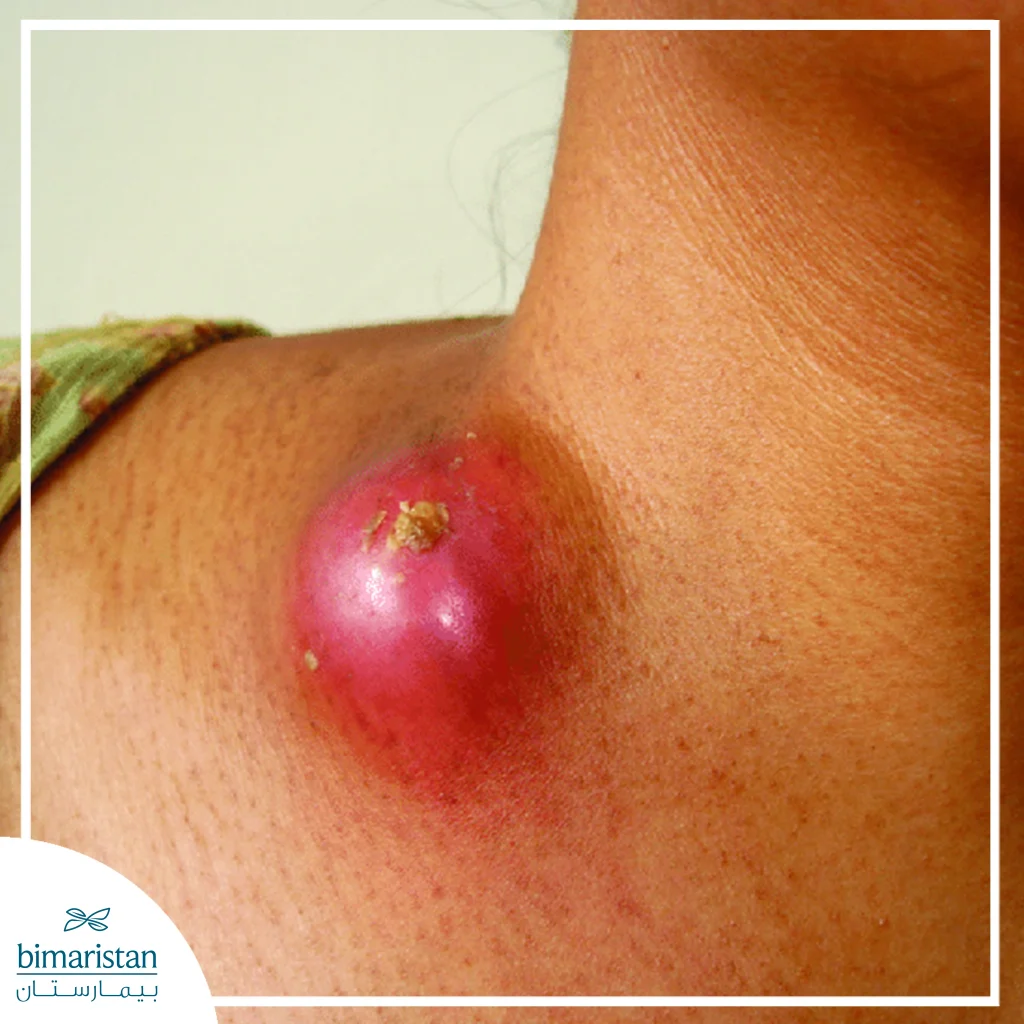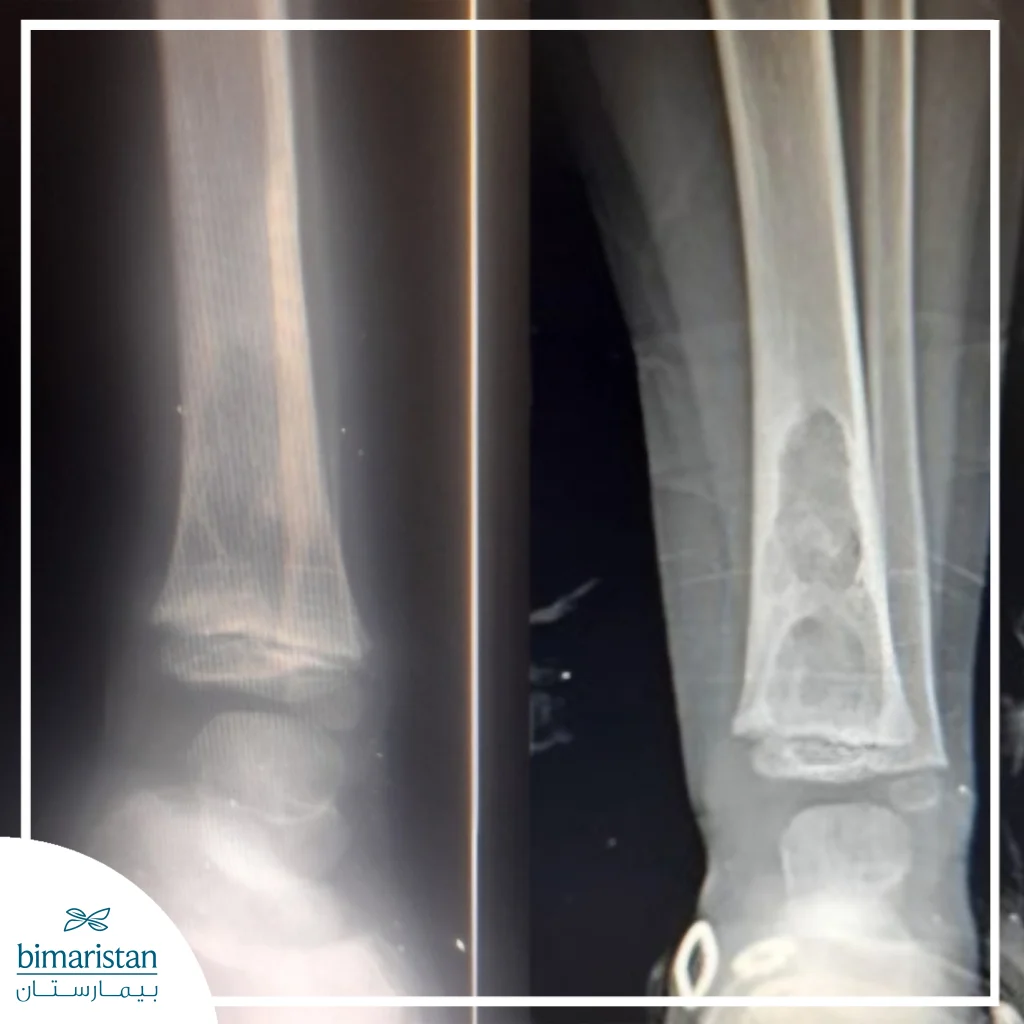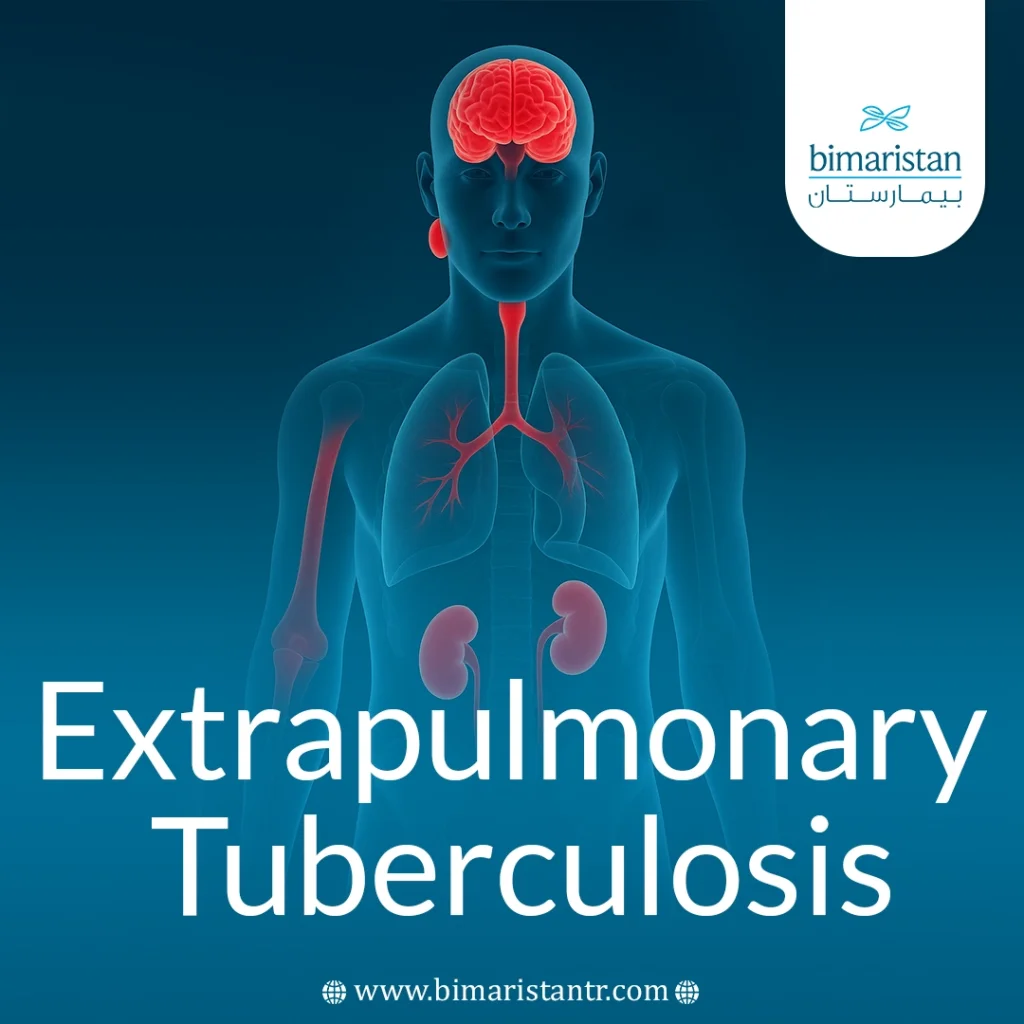Tuberculosis is one of the most common infectious diseases around the world, and although the lungs are the most common site of infection, the germ that causes it can spread to other organs of the body, and when this happens, the disease is known as extrapulmonary tuberculosis.
Accounting for 15-20% of TB cases globally, this type of disease is a diagnostic and therapeutic challenge due to the variety of sites of infection and the different nature of the symptoms. Understanding this type of TB is essential to minimizing its complications and achieving full recovery.
What is extrapulmonary tuberculosis?
Extrapulmonary tuberculosis occurs when the Mycobacterium tuberculosis germ travels from the lungs to infect other organs in the body such as lymph nodes, the membranes surrounding the lungs (pleura), the brain, kidneys, bones, joints, and sometimes the throat, liver, or almost any other organ.
In most cases, this type of tuberculosis is not contagious, unless it is accompanied by an infection in the lungs, a lesion in the throat or mouth, or an open abscess that secretes fluids containing a high concentration of germs that can be transmitted by air. Extrapulmonary tuberculosis is more commonly seen in immunocompromised people such as those with HIV or diabetes mellitus.
Types of extrapulmonary tuberculosis
The form of extrapulmonary tuberculosis varies depending on the organ affected, as the bacterium causes different inflammatory reactions in each tissue of the body, and distinguishing the type of infection helps in choosing the most appropriate treatment plan and assessing the likelihood of complications.
1. Lymph node tuberculosis
Lymph node tuberculosis is the most common form of extrapulmonary tuberculosis, accounting for approximately one-third of cases, often affecting the nodes in the neck, especially the posterior cervical or supraclavicular nodes, and may extend to the axillary or mediastinal nodes in some cases. This type of tuberculosis is characterized by its slow chronic course, often affecting young people or immunocompromised people such as HIV patients, and is one of the most common causes of chronic lymphadenopathy in countries where tuberculosis is prevalent.
The condition usually manifests as a gradual and painless enlargement of the lymph nodes, which is initially hard and mobile and then softens over time due to the formation of small abscesses within the nodes. In advanced stages, the area may become inflamed and develop an ulceration or form a skin fistula that secretes chronic secretions. The condition is not usually accompanied by obvious respiratory symptoms, but some patients may develop a mild fever, night sweats, or weight loss.

2. Bone or joint tuberculosis
Bone TB is the second most common form of extrapulmonary tuberculosis and occurs when the germ reaches the bones or joints through the bloodstream from a previous pulmonary focus. The disease usually affects the spine in the thoracic or lumbar vertebrae, and this form is known as Pott’s disease. The infection begins with chronic pain in the back or affected joint that gradually increases over time, and the patient may notice stiffness in movement or swelling in the area. As the condition worsens, spinal deformity or compression of the spinal nerves may occur, leading to weakness or paralysis in the lower limbs.
In the joints, the disease manifests as a chronic, slowly progressive inflammation that often affects the hip or knee joint, causing intermittent pain and mild swelling that increases with movement. This form of tuberculosis is characterized by a long course and unclear symptoms at the beginning, and is often diagnosed months after the onset of symptoms due to the absence of characteristic signs in the early stages.
3. Renal and genitourinary tuberculosis
This type occurs when tuberculosis germs reach the kidneys through the blood from a previous pulmonary focus, and may remain dormant for years before it begins to cause gradual tissue damage. As the infection progresses, it spreads to the ureters and then the bladder, and may affect the genitals as well.
Symptoms usually start out mild and nonspecific, such as frequent urination, pain in the flank, or blood in the urine. In some cases, what is known as aseptic uremia, the presence of leukocytes in the urine without the presence of germs in the laboratory culture, is a characteristic sign of renal tuberculosis. In advanced stages, kidney function may gradually decline due to scarring or chronic urinary obstruction.
In men, the inflammation may spread to the prostate or epididymis, causing painful scrotal swelling or decreased fertility, while women may develop inflammation of the tubes or ovaries, leading to chronic pelvic pain or infertility due to fibrosis of the reproductive tract. This form of the disease progresses slowly and is often detected long after its onset.
4. Meningitic tuberculosis
Meningitic TB is the most serious form of extrapulmonary tuberculosis because it affects the membranes that surround the brain and spinal cord, and delayed diagnosis often leads to permanent neurological complications or even death. This type is caused by the spread of TB germs through the blood to the meninges, especially in children or those who are immunocompromised.
Symptoms usually start gradually and include persistent headaches, low-grade fever, nausea, and neck stiffness. As the disease progresses, disorders of consciousness, seizures, or focal neurological symptoms such as cranial nerve paralysis may appear, and may sometimes be accompanied by hydrocephalus as a result of blockage of cerebrospinal fluid pathways.
Meningetic tuberculosis is a medical emergency that requires prompt diagnosis and treatment to avoid permanent brain damage.
5. Miliary tuberculosis
Miliary tuberculosis occurs when TB germs spread through the bloodstream to multiple organs at the same time, such as the lungs, liver, spleen, and bone marrow. This form is usually seen in children or people with weakened immune systems, and is considered one of the most dangerous forms of the disease due to its widespread spread in the body.
Symptoms are generalized and nonspecific and include persistent fever, night sweats, weight loss, general weakness, shortness of breath, and enlarged liver, spleen, or anemia may be seen as a result of bone marrow involvement. Radiographs of the lungs usually show the presence of small, diffuse nodules resembling millet grains, which is what gives the disease its name.
Early diagnosis in this type is critical because delayed detection can lead to multiple organ failure or death.
6. Less common types of extrapulmonary tuberculosis
In addition to the main forms of TB, other organs in the body may be affected to a lesser degree. Skin tuberculosis appears as chronic sores or abscesses under the skin, often as a result of spreading the infection from neighboring infected nodes or bones, while intestinal tuberculosis affects the small intestine or colon, causing chronic abdominal pain, bloating, or recurrent diarrhea, and may resemble inflammatory bowel disease in its symptoms.
Hepatic tuberculosis can affect the liver alone or as part of disseminated tuberculosis. It shows general signs such as fatigue, loss of appetite, and elevated liver enzymes, as the infection may extend to the pleura, causing pleural tuberculosis, which causes chest pain and shortness of breath due to the collection of fluid around the lungs. In some rare cases, the infection extends to the heart membrane, causing pericardial TB, which may lead to swelling in the legs or shortness of breath due to pericardial effusion.
Although rare, these forms of TB require accurate diagnosis and careful medical follow-up to avoid complications or spread to other organs.
Diagnosis of extrapulmonary tuberculosis
The diagnosis of extrapulmonary tuberculosis depends on a combination of clinical examination, laboratory, and radiologic tests, because the disease may present with vague symptoms that vary depending on the affected organ.
Evaluation usually begins with a skin test or blood test (IGRA) to detect a previous immune response to the bacterium, with a chest radiograph to look for associated pulmonary injury or a diffuse miliary pattern. Samples of infected fluids or tissues, such as cerebrospinal fluid, urine, pleural or pericardial fluid, or lymphatic biopsies, are then taken for microscopic examination after staining and in vitro culture for Mycobacterium tuberculosis, which is the standard of reference for diagnosis, although results may take weeks to appear.
In cases with a small number of germs, modern molecular techniques are used, such as the GeneXpert MTB/RIF test, a rapid test that detects the genetic material of the tuberculosis (MTB) germ and simultaneously determines whether it is resistant to the drug rifampicin (RIF). This test usually shows the result within two hours and is one of the most accurate and fastest ways to diagnose the disease early.
Modern imaging methods, such as CT scans and MRI scans, help to pinpoint the exact location of the infection and show the typical manifestations of each organ, such as fine nodules in the lungs with miliary tuberculosis or cold abscesses in the spine with Pott’s disease. If disseminated tuberculosis is suspected despite negative tests, a liver or bone marrow biopsy may be performed to confirm the diagnosis.
A positive result for any of these tests, along with a supportive clinical picture, confirms the presence of an extrapulmonary injury and allows treatment to be initiated without delay.

Extrapulmonary tuberculosis treatment
The treatment of extrapulmonary tuberculosis aims to completely eradicate the germ and prevent its spread or recurrence, and relies on a combination of basic drug treatment with some supportive measures when needed, such as the use of corticosteroids or surgical intervention in specific cases.
Drug therapy
Drug therapy is the mainstay of treatment for all cases of extrapulmonary tuberculosis, using the same drug regimen as for pulmonary tuberculosis. The treatment period usually lasts 6 to 9 months, while some types, such as meningeal or bone TB, may require longer treatment of up to 12 months to ensure full recovery and prevent relapse. Poor adherence to treatment or the use of an insufficient number of drugs is one of the main reasons for the emergence of drug-resistant TB, so it is advisable to continue treatment under specialized medical supervision with careful monitoring of adherence and side effects.
Cortisone adjuvant therapy
Corticosteroids are used as adjunctive therapy in some cases of tuberculosis to reduce inflammation and protect vital organs from complications. Studies have shown them to be particularly effective in meningeal tuberculosis, where they reduce the risk of death and permanent neurological disability, and can be useful in pericardial tuberculosis by reducing effusion around the heart and preventing stenosis. However, they are not routinely recommended for other types of TB, and their use is determined by the physician depending on the site of infection and the patient’s immune status, especially in HIV-infected patients.
Surgical treatment for tuberculosis
Surgery is only performed in specific cases when drug therapy fails or complications arise that require immediate intervention:
- Drainage of abscesses or large effusions, such as pericardial or pleural effusions
- Removal of fibrotic or severely damaged tissue in the kidney or intestines when their function has declined
- Decompression of the spinal cord in advanced Pott’s disease or stabilization of the vertebrae in severe deformity
Lymph node tuberculosis usually does not require curative surgery, but only for diagnostic purposes or if a large abscess forms that needs to be drained.
Prevention of extrapulmonary tuberculosis
Following the treatment to its end and fully adhering to the drug plan is one of the most important steps in preventing re-infection or the development of the germ into a drug-resistant form, as stopping treatment early or neglecting doses makes it easier for the disease to relapse and spread to other organs of the body. Therefore, regular follow-up with your doctor and regular check-ups are recommended to ensure full response to treatment.
Prevention of extrapulmonary TB begins with treating pulmonary TB cases early, as controlling the source of infection in the lungs prevents the transmission of germs to the blood or other tissues, and vaccinating children with the BCG vaccine, which provides partial protection against serious forms such as meningeal and miliary tuberculosis.
General immunity plays a pivotal role in prevention, so it is advisable to follow a healthy lifestyle that includes balanced nutrition, adequate sleep, avoiding smoking and constant stress, and treating chronic diseases such as diabetes or weak immunity that increase the likelihood of infection. Finally, adherence to infection control measures within hospitals, such as temporary isolation of patients with active TB and well-ventilated rooms, limits the transmission of germs to others and protects vulnerable groups.
In conclusion, extrapulmonary tuberculosis is a completely treatable disease when detected early and adhering to the recommended treatment, and accurate diagnosis and continuous follow-up contribute to preventing complications and achieving full recovery. Medical centers in Turkey with specialized staff and advanced technologies provide excellent treatment opportunities, and Bimarestan Medical Center facilitates patients’ access to them and accompanies them during their treatment journey to ensure the best results.
Sources:
- Lee J. Y. (2015). Diagnosis and treatment of extrapulmonary tuberculosis. Tuberculosis and respiratory diseases, 78(2), 47-55. https://doi.org/10.4046/trd.2015.78.2.47
- Gopalaswamy, R., Dusthackeer, V. N. A., Kannayan, S., & Subbian, S. (2021). Extrapulmonary Tuberculosis-An Update on the Diagnosis, Treatment and Drug Resistance. Journal of Respiration, 1(2), 141-164. https://doi.org/10.3390/jor1020015

